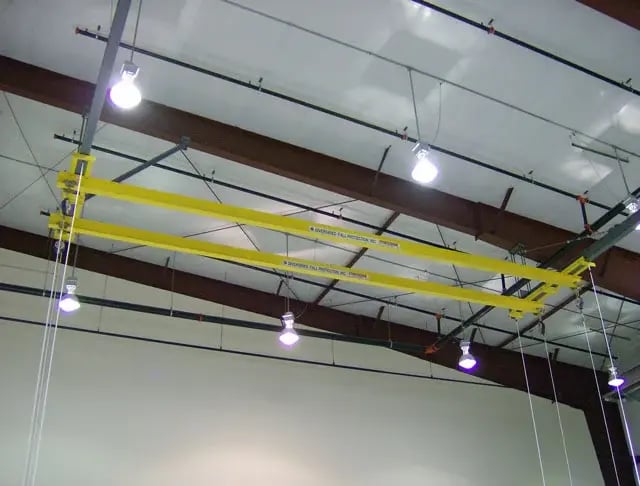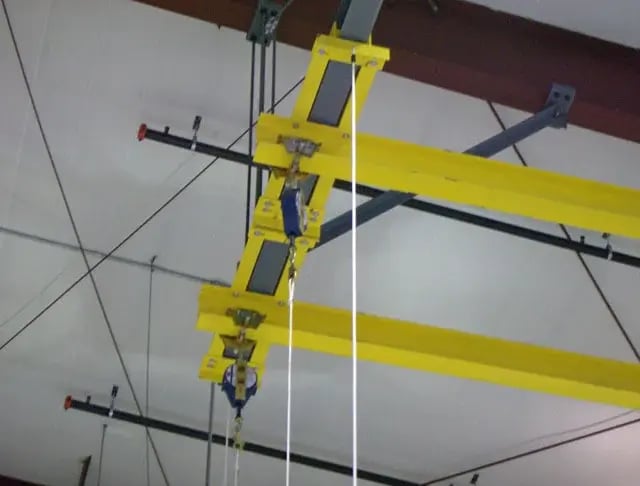Cartesian Bridge Fall Protection Systems
For applications with lower working heights and multiple positioning requirements, Diversified Fall Protection delivers proven cartesian bridge fall protection systems. Comprised of an overhead rail and trolley, cartesian systems can be manually or motor driven. The two-dimensional cartesian coordinate system offers the flexibility to provide fall protection for 100% of the planned coverage area.
Cartesian bridge fall protection systems may be attached to overhead structures for indoor applications, such as aircraft hangars, or they may be designed and fabricated as freestanding units for outdoor tanker truck applications.
Versatile and easy to use, cartesian bridge fall protection systems minimize fall distance, reduce deflection rates, and satisfy the safety needs of multiple user applications. Contact the team at DFP to learn more.

Design Considerations
A fundamental design consideration for cartesian fall protection is the size of the planned coverage area. The system design must not only cover the entire work area but also accommodate the total number of planned users, including pass-by capability.
Once coverage area and user capacity requirements are established, multiple bridges may be recommended to provide maximum fall protection for the work area.
Cartesian-style systems are suspended overhead, so a thorough inspection of the roof support structure must be done. DFP’s application engineers perform a complete site assessment to determine whether your roof support system is strong enough to support a cartesian fall protection system. Talk to an engineer to learn more.
See Our Cartesian Bridge Systems



b-1.jpg?width=1368&height=1340&name=Rail%20(175)b-1.jpg)


.webp?width=500&height=375&name=Aircraft%20(55).webp)
.webp?width=500&height=375&name=Aircraft%20(25).webp)

